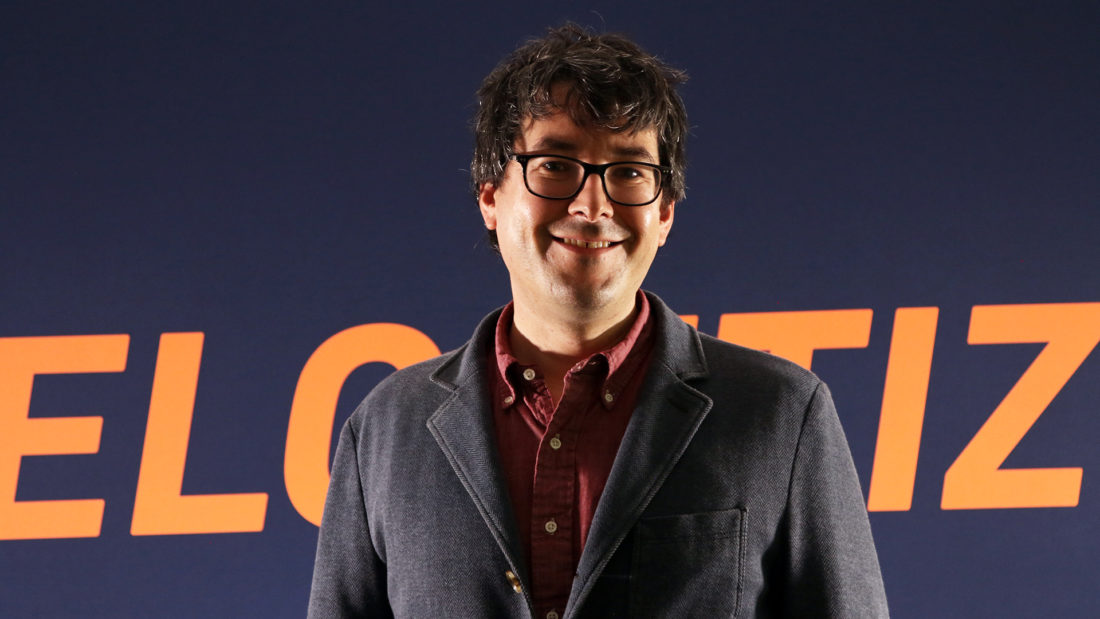The type of cycle that we tend to see in digital technology is a two-part cycle. First, a generation creates new possibilities, new technologies and new ways of reaching people. Then you get a secondary wave of technology which makes that easier and more accessible.
John Prior is the Solutions Director at twentysix digital, a full-service digital marketing agency specializing in bringing brands to life. While at twentysix, Prior has had many roles, including interface developer, programmer, account manager, project manager, and technical consultant.
In this episode of Velocitize Talks, Prior shares how the user experience can be augmented by tools like headless CMS.
Digital Experience in the Digital Space (1:47)
There’s very little separation anymore between what’s happening in the digital space and what’s happening in the physical space. If you’re treating all of those as separate concepts and separate channels, then you’re not delivering a joined-up experience.
The digital experience has shifted since the advent of mobility and affordability in personal technology, Prior says. “Always-on-connection-so-long-as-you’re-at-your-desktop” has changed to “always-on-no-matter-where-you-are.”
It’s a pretty apt description. One-third of people look at their phones within five minutes of waking up. Ninety-nine percent check their phones throughout their work day.
The digital space and the physical space are blended together now more than ever. That said, brands need to create a seamless customer experience highlighting the brand’s value.
It’s All Connected (3:25)
The thing that’s really disappeared is websites as a stand-alone concept.
There’s been a significant change in RFPs (requests for proposal) presented to twentysix. Instead of asking for a stand-alone website as a singular communications proposition, clients are more interested in an interconnected system. This could include customer relationship management and e-commerce platforms, to name just a couple. Brands are taking a more holistic approach to drive shifts in the digital space.
Today’s websites enhance user experience by integrating technologies like Artificial Intelligence, Internet of Things, 3D, headless, and voice search. This user experience sets a brand apart from competitors. The creativity of a brand shines through when the “just-right” mix of technology is used.
Head’s Up (5:12)
Headless is shifting from a general aspirational technology standpoint to something which is more common as a starting point.
In a WP Engine study, 92% of organizations said headless technologies make it easier to deliver a consistent content experience. Additionally, these organizations believe their digital experiences contribute to the overall success of their business.
A headless CMS provides brands the tools to build and deliver digital content. Of course, headless as a concept is nothing new. But the recent rise of headless CMS provides an accessible tool for brands creating and controlling their omnichannel content.
According to Prior, old problems with headless functionality are being solved. That’s enabling brands to manage, build and create without the setup of a specialist. Also, the new generation of headless CMS offers improved editing and workflow management tools.
When we caught up with Prior in 2021, he indicated that using the term “hybrid” to describe headless and traditional architectures is no longer a helpful framing for the concept. “Content management, assembly and delivery to the user are all key capabilities in an overarching experience delivery model which headless and traditional architectures handle differently,” Prior says. “‘Hybrid’ implies a uniform reconciliatory architecture but there are multiple valid routes to deliver those capabilities.”
The Seamless Customer Experience (7:27)
We have another wave of new capabilities happening that’s going to build on what’s been made easier. It’s going to tend towards content and experience as a unifying journey and a unified experience for end users.
Brands produce a prolific amount of content for a variety of mediums, as tracked by HubSpot statistics. WordPress users, for example, produce about 70 million new posts each month. There are over 30 million podcast episodes in existence. Every day people watch over a billion hours of video.
Instead of all of these multiple iterations being separate, “there’s a growing ability to join those journeys up,” Prior says. There are technologies that will not only link different digital content platforms but also call centers, chat channels and more. “It will start to become more seamless because we’ll be seeing technologies that enable those to be created,” he says.
Changing Personas (9:33)
When you’re thinking about the concept of a user, no user represents a single persona. People are different personas at different points in their life.
One of Prior’s favorite books, The Collected Letters of Flann O’Brien, tells the story of Irish writer Flann O’Brien. O’Brien was known for picking arguments with himself in newspaper columns using different pen names and a variety of voices. Prior appreciates O’Brien’s ability to embody different personalities. In fact, he’s used this idea himself when creating user personas.
Depending on their role, whether it’s professional or as a consumer, people will have different needs and reactions, Prior says. This is helpful when considering how brands interact with customers and how customers will react.
To learn about twentysix digital, check out their website and follow them on LinkedIn, Facebook and Twitter at @26digital. To stay up to date with Prior, follow him on Twitter or LinkedIn.
This episode of Velocitize Talks was originally recorded in London in 2019. It has been updated accordingly.
